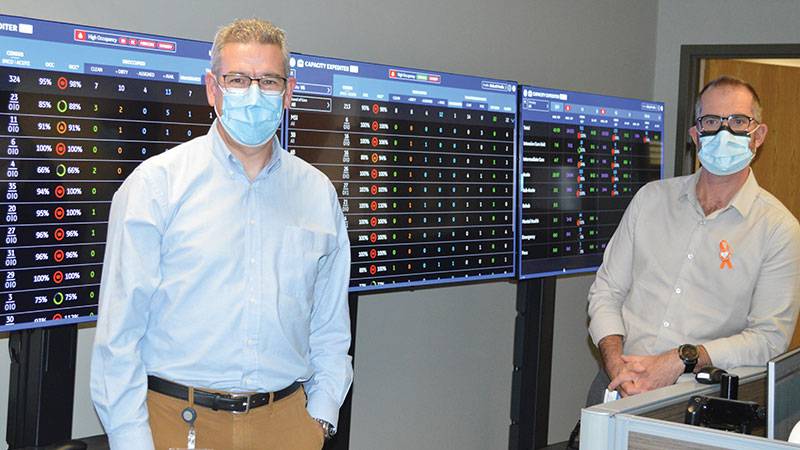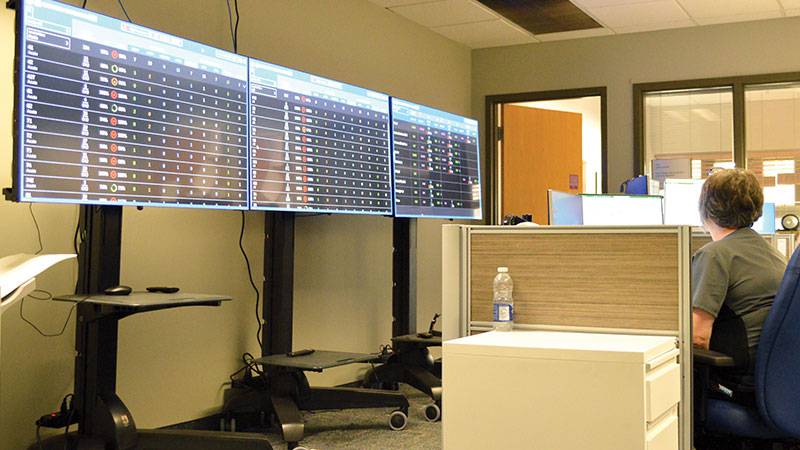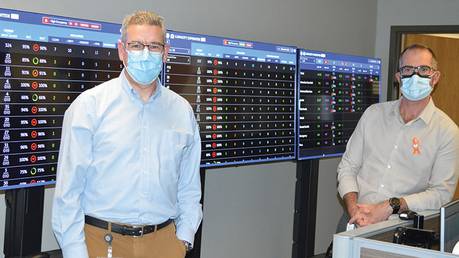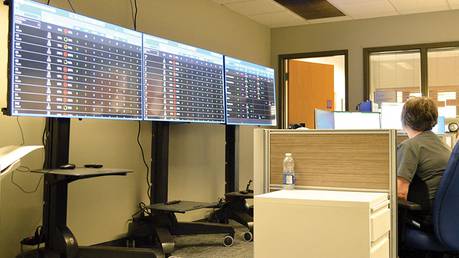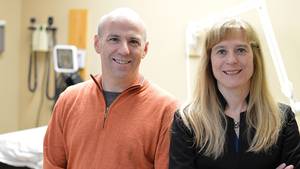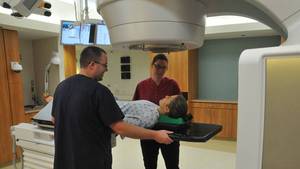Managing modern health care is an information-intensive endeavour. Decision-makers rely on data from a multitude of sources, including doctors, nurses, first responders, technicians, physiotherapists, social workers, occupational therapists and others, all working within a complex and interconnected system.
“For this to function well, it really requires a team-of-teams approach, with everyone working together to improve the patients’ journey,” explains Dr. Kirk Magee, chief, Central Zone Network of Emergency Departments, who works at the Halifax Infirmary site of the QEII Health Sciences Centre.
The Care Coordination Centre (C3) at the QEII is a Nova Scotia Health Innovation Hub initiative that falls within the provincial government’s Action for Health plan. With future plans to expand across the province, C3 is now playing a crucial role in the patient care journey, providing decision-makers with access to real-time data on access, patient flow and health system resources.
“The idea is to apply a command centre concept to health care,” says Gordon Peckham, senior director of the Care Coordination Centre Operations. “It gives us real-time, live data to help inform decisions around access and flow.”
The C3 team will help connect healthcare workers across the facility, better coordinating each patient’s journey from their first moment of contact with the healthcare system – whether through emergency services, a specialist referral, primary care clinic or another method — through discharge.
The need for the centre is clear, as delays at any step of this process can have negative consequences for patient outcomes, Dr. Magee points out.
“The most obvious example is in the emergency department,” Dr. Magee says. “Many of the treatments that we can offer are very time-dependent, so waiting in the emergency department is more than just an inconvenience. We know that the longer admitted patients wait, the worse the outcomes are.”
There is a requirement for patient care to be “coordinated and integrated,” Gordon explains. With the opening of the C3 earlier this year, the goal is to improve this integration and coordination.
“Sometimes access to that care and flow within the system was occurring independently from the requirements of other units, programs and services,” he says. “We didn’t have access to real-time information about what was happening across the system.”
As an example, there might have been available beds in one area, while another department was over-capacity. With no hub to coordinate the distribution of resources, the problem would remain unresolved.
Now, the C3 team provides real-time data on available beds, occupied beds, predictive discharges, confirmed discharges and demand. This data will result in reduced wait times and improved access to care.
“Before C3 we did not have an automated view of the system,” Gordon says. “Patient flow managers were doing manual reports, unit by unit. By the time that data reached the leadership teams, there was a risk it was outdated. Now we can look at these data streams and understand what is happening in the system as we speak.”
The C3 process includes a daily meeting with all the stakeholders. At 10 a.m. each day, representatives from every department involved in access and flow — including emergency, surgery, medicine, geriatrics, diagnostic imaging, continuing care and rehabilitation — get together virtually. Meeting attendance expands and contracts daily, depending on the pressures of the day, Gordon explains.
“Each of these teams can help each other in different ways,” he says. “These meetings create a forum for all these different services to discuss various issues and problem solve together.”
Physician engagement is a vital part of the C3 process, Dr. Magee adds.
“We are helping get the physicians involved in making these changes to processes, and also letting them know how C3 will support the work that they are doing.”
The QEII serves a patient population across the province and beyond, and the C3 process will expand its reach going forward, both geographically and to areas beyond access and flow, such as quality of care and community outreach.
“We’re starting with access and flow at the QEII, but it will expand across the province and into other services,” Gordon says. “It’s about providing access to the right care, by the right provider at the right time.”
Doris Grant, senior director, Innovation, Nova Scotia Health, echoes the importance of the C3 process on patient care and highlights the impact on the future of innovation and research in our province.
“We are amongst the first hospitals in Canada to create a command centre within our healthcare system, and it is rapidly transforming the culture of innovation at Nova Scotia Health,” says Doris. “C3 is generating large volumes of real-time operational data that will create endless opportunities for research within Nova Scotia Health, as well as our innovation ecosystem.”

